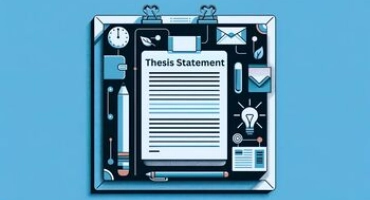How to Write a Diagnostic Essay
Table of contents
In most cases, teachers will assign a diagnostic paper to assess specific skills you mastered in your previous years. Through it, they will get an idea of your level of English or course acquisition. So, how do you start a diagnostic essay, and what do you cover? If the demands of other courses or complex projects require more focus, you might consider finding an expert to write my research paper so you can manage your overall academic load better.
Above all, you must follow well-established academic writing rules and the instructions shared by your mentor. Below, you’ll find detailed guidance on the diagnostic essay format, purpose, and a model example. We also share some practical ideas on how to write an effective and seamless paper.
What Is a Diagnostic Essay?
The diagnostic essay definition suggests that it aims to diagnose your abilities and knowledge in a specific subject. Besides assessing your overall aptitude, teachers will use your submission to evaluate your level of course acquisition, grammar and vocabulary proficiency, and sentence construction.
The good news is that you should not be afraid of diagnostic essays. These papers help teachers identify areas of struggle and then offer you help to overcome them. Once your mentor understands your difficulties, you will get extra materials to improve your academic performance.
Without this assignment, teachers find it challenging to determine your needs as a student. Moreover, a diagnostic essay can often be a formal entry requirement of educational institutions. If your results show you need assistance, you can receive it as tutoring or financial sources.
The Importance of Writing a Perfect Diagnostic Essay
Knowing how to write a diagnostic essay about yourself or another subject is beneficial for any academic course. This paper will be a critical aspect of the final decision, whether at admissions, during school transfers, or for advanced placement.
Hence, it’s of the utmost importance to put in maximum effort and compose an engaging piece. Take it seriously, as if it is a marked project, and demonstrate your honed academic skills. Often, a short essay can make or break your potential to advance your education or career.
Finally, you’ll probably have to write a personalized account when applying for enrollment, grants, or scholarships. In this case, your sentences should reveal your passion and life goals. To be on the safe side, let’s dive into the essence of writing an ideal diagnostic essay.
How Do You Write a Diagnostic Essay Properly?
Your teacher will tell you how to write the task structure and layout. You will also get a prompt question or guidelines on what to include in your work. Considering these metrics is vital if you want to submit a properly formatted manuscript.
Typically, you’ll get a limited deadline and pre-set essay length to help you plan your time. If you don’t get detailed information, an essay writers service can help you start on the right foot. You might also get a free sample to guide you in the process.
Besides understanding the task parameters, you must also consider the liberties you can take in conceptualizing your work. Since the diagnostic essay is purpose-driven and not a particular type, it can be about anything or anybody. It can also take various forms of narrative, creative, or expository writing.
The best approach is to include an introduction with a thesis statement, body paragraphs, and a conclusion. As for the lettering, stick to well-known variants such as Times New Roman, Calibri, and Ariel in font size 11 or 12 with one-inch margins. Avoid creative and colorful letters that aren’t appropriate for formal writing.
Finally, pay attention to established grammar and punctuation rules. Typos and wrong syntactic structures will impact your score and make your work look sloppy. Another thing you should bear in mind if your instructor doesn’t provide guidance is to use widely acknowledged formats like APA, MLA, or Chicago.
Diagnostic Essay Outline Example
You may think that outlining your essay is excessive, but this segment will ease and speed up your work. Alternatively, you might pay for papers online and spare yourself the stress and pressure of jotting down and organizing your thoughts upfront. The only thing you must not forget is to include only one idea per paragraph. Here’s how to write a diagnostic paragraph within the ideal essay outline.
Introduction paragraph
- Open your essay with an amusing fact, shocking statistics, a topic-related quote, or a thought-provoking question. The hook sentence sets the tone and urges the audience to keep exploring.
- Carefully guide your reader to the pinnacle of your essay, demonstrating your intention to discuss a particular matter.
- Frame your thesis statement to include the main standpoints of your paper.
Three Body Paragraphs
- Begin all body paragraphs with an impactful topic sentence. This fraction serves as a summary of the entire body segment.
- Write arguments you can prove with relevant evidence, data, or personal experiences.
- Don’t include many details but keep to the point and relate all information to the thesis statement.
Conclusion
- Restate the thesis in the conclusion opening, but use different wording.
- Wrap up the main arguments and don’t present new or off-topic information.
- End with a positive tone to satisfy the audience’s expectations or ask the reader to contemplate the elaborated subject.
When quoting original works or publications, ensure these are reputable sources that support your claims. If you have difficulties drafting your literary analysis, you can order various essays for sale on trustworthy sites like PapersOwl. The platform works with experienced writers from many fields that can meet your needs around the clock.
Last, mind the plagiarism level. To avoid including copied content, scan your essay through a plagiarism checker and ensure it is 100% original. You don’t want to get in trouble or risk getting expelled from college for a minor slippage.
Diagnostic Essay Example
Prompt: Do you think learners would benefit from attending classes online? Take a clear position and substantiate your views with three supporting ideas.
With the development of technology, distance learning is becoming increasingly popular in today’s education. Some people even believe distance learning might replace regular schools. However, e-learning can be harmful due to the lack of social contact, decreased motivation, and technical difficulties.
First, students who want face-to-face interaction will miss the activities associated with school life. For them, distance learning may not be a reliable option due to the lack of real-life communication. While you can also interact with online education, this is over the phone or the Internet, so face-to-face connections are genuinely absent.
Second, to follow lectures online, strong motivation and will are required. More precisely, learners should master a significant portion of the training material themselves. Attending classes will also require commitment, responsibility, and self-command. Not everyone can maintain a proper pace of learning without control.
Last, students often realize there are many technical difficulties with online learning. Some days, the Internet doesn’t work; other days, the programs and software are down, and learners can’t access their courses. Technical glitches can be frustrating and deter learners from joining classes. Still, these bugs often get fixed quickly, and participants can continue their work.
To summarize, online learning can pose severe difficulties to anyone who attends classes from home. Disadvantages mainly lie in the lack of face-to-face communication, loss of interest, and technical glitches. If these obstacles get resolved in the future, online education might become a viable learning alternative.
Dos and Don’ts in Writing a Diagnostic Essay
Here are a few tips on writing a compelling piece. Mind the following suggestions by ticking each point on the list when editing and proofreading your work.
- How to start a diagnostic essay? Pick an academic topic you’re knowledgeable about or interested in to fascinate your professor.
- Spend more time framing the perfect thesis statement, as this is the central argument you’re getting across to your reader.
- How long is a diagnostic essay? Write at least three effective body paragraphs, an introduction, and a conclusion. There should be no more than 500 words per piece.
- Ensure your diagnostic essay has a logical flow of thought.
- Use appropriate linking words to connect your arguments.
- Always edit and proofread your work for grammar mistakes, typos, or awkward structures.
Your submission should be an accurate reflection of how you tackle challenges by avoiding the following traps:
- Don’t use colloquial language, contractions, or jargon in a formal piece of writing.
- Steer away from lengthy or run-on sentences that confuse the reader.
- Avoid exaggerated and vague adjectives and adverbs. You should get your points across and not perplex the audience.
- If you include quotes (not mandatory), give proper credit to the author.
- Avoid anything that deviates from the main topic.
- Organize your time to be more productive because you might get an hour to submit your work.
Writing a diagnostic essay can be a daunting task. However, if you break the process down into manageable steps and do your paper in a thoughtful, organized way with the addition of new information, you can produce a well-crafted essay.
- To begin, you will need to make sure you understand the assignment, including the prompt and any expectations or guidelines.
- Then, you should brainstorm and develop a thesis statement, followed by researching and gathering evidence to support your argument.
- After that, you should craft a well-structured outline that follows a logical flow.
- Finally, you should write a clear, concise essay that adds new information to the conversation.
With these steps, you can create an effective diagnostic essay that impresses your reader.






